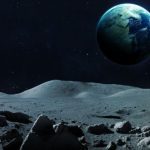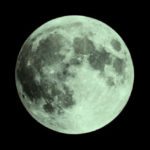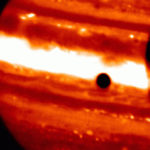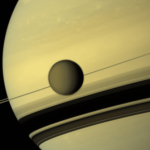 Weird Stuff
Weird Stuff  Weird Stuff
Weird Stuff  Our World
Our World 10 Ways Your Christmas Tree Is More Lit Than You Think
 Movies and TV
Movies and TV The 10 Coolest Stars to Set Sail on The Love Boat
 History
History 10 Things You Didn’t Know About the American National Anthem
 Technology
Technology Top 10 Everyday Tech Buzzwords That Hide a Darker Past
 Humans
Humans 10 Everyday Human Behaviors That Are Actually Survival Instincts
 Animals
Animals 10 Animals That Humiliated and Harmed Historical Leaders
 History
History 10 Most Influential Protests in Modern History
 Creepy
Creepy 10 More Representations of Death from Myth, Legend, and Folktale
 Technology
Technology 10 Scientific Breakthroughs of 2025 That’ll Change Everything
 Weird Stuff
Weird Stuff Ten Bizarre Facts About The Doge Meme
 Our World
Our World 10 Ways Your Christmas Tree Is More Lit Than You Think
 Movies and TV
Movies and TV The 10 Coolest Stars to Set Sail on The Love Boat
Who's Behind Listverse?

Jamie Frater
Head Editor
Jamie founded Listverse due to an insatiable desire to share fascinating, obscure, and bizarre facts. He has been a guest speaker on numerous national radio and television stations and is a five time published author.
More About Us History
History 10 Things You Didn’t Know About the American National Anthem
 Technology
Technology Top 10 Everyday Tech Buzzwords That Hide a Darker Past
 Humans
Humans 10 Everyday Human Behaviors That Are Actually Survival Instincts
 Animals
Animals 10 Animals That Humiliated and Harmed Historical Leaders
 History
History 10 Most Influential Protests in Modern History
 Creepy
Creepy 10 More Representations of Death from Myth, Legend, and Folktale
 Technology
Technology 10 Scientific Breakthroughs of 2025 That’ll Change Everything
10 Amazing Space Secrets from Our Own Solar System
It seems as if we’ve got the solar system pinned down pretty good: eight planets, one big Sun, a bunch of space rocks, some chunks of ice, and Pluto.
However, there are lots of subtleties and secrets that go unappreciated or unreported. The following phenomena include some of the most spectacular space secrets hiding right in our own solar backyard.
Related: Top 10 Mind-Bending Unsolved Mysteries of the Universe
10 The Asteroid Bennu Came from an Ancient (Watery) World
Asteroid Bennu is a near-Earth asteroid that passes close to us every six years. NASA did the seemingly impossible yet again when it brought back a piece of it in 2023 via the OSIRIS-REx mission.
This ancient piece of cosmic history appears to have originated from a larger body, a watery parent world, as researchers discovered a “large proportion” of minerals formed via the evaporation of salty water—like those found in dried salt lakes on Earth. Numerous amino acids were also present, suggesting that Bennu’s parent body had biological building blocks, water, and the energy required to keep that water liquid. Then, this process was interrupted early in its development, coincidentally creating a 4.5-billion-year-old time capsule.
Specifically, researchers found the following super-important life-builders: “14 of the 20 protein-building amino acids found in Earth life, all five of the nucleotide bases found in DNA and RNA, and ammonia.”[1]
9 Diving into the Heat Mystery of Uranus
Uranus has a heat mystery, stretching back to the Voyager 2 analysis in 1986, which suggested that this gassy, icy giant didn’t have its own internal heat. That should be impossible, given how planets form from a bunch of material smashing together.
Now, University of Houston–led research shows that Uranus releases more heat than it receives from sunlight as it slowly loses the heat of its formation, 4.5 billion years ago. It releases 12.5% more heat than it receives from the Sun, which is low because the other giant planets have a flux of over 100 percent.
This weirdness may mean that Uranus is different on the inside compared to the other giant planets. It may also be due to Uranus’s unique history—for example, it orbits sideways, possibly because Uranus suffered a major collision long ago. Another factor may be its long seasons, which each last for about 20 years due to its tilt (caused by the collision).[2]
8 Webb Reveals Neptune’s Crazy Auroras, Massive Temperature Drop
The James Webb Telescope (JWST) shows us breathtaking views from the literal edge of the universe, yet it also reveals some solar system weirdness much closer to home. For example, JWST has recently revealed Neptune’s auroras in greater detail than ever before, and they’re a beautiful doozy.
Auroras had been detected on each of the other giants, but confirmation on Neptune remained elusive. Unlike the other planets, including our own, the auroral light show on Neptune does not occur at the poles but at mid-latitudes, similar to South America’s position on Earth.
This is due to Neptune’s oddly tilted magnetic field. This field funnels the Sun’s energetic particles, and when they smash into Neptune’s atmosphere, they release energy and put on a pretty light show.
Additionally, JWST detailed why the Neptunian auroras have been so elusive: a dramatic cooling in the upper atmosphere. The temperature here dropped by “several hundreds of degrees” since the flyby of Voyager 2, leading to much weaker, harder-to-spot auroras.[3]
7 A Weird Little Icy Thing Is Synced with Neptune
The outer reaches of the solar system, beyond Neptune, hide all sorts of weird, icy little worlds, most notably the dwarf planet Pluto. But there’s also an odd space rock that’s in sync with Neptune. According to 1960s sci-fi, this may be a derelict alien space base.
According to actual science, it’s not. Recently, a research team led by the Center for Astrophysics discovered this odd outer system body, just 56 miles (90 km) in diameter, called 2020 VN40. It’s the only trans-Neptunian object (TNO) that’s in sync with Neptune, which means it completes one orbit for every ten orbits completed by Neptune, kind of like a small child, or chihuahua, dancing with their parent.
This weird in-sync space rock is one of who knows how many that are constantly discovered in incredibly large and tilted orbits—2020 VN40 has an average distance from the Sun that’s 140 times greater than the Earth-Sun distance, making these small, distant objects hard to find.[4]
6 Our Neighbor Dwarf Planet Ceres May Be a Dried-Up Ocean World
Ceres is a criminally underrated member of our solar family. Named after the goddess of agriculture and fertility, this icy rock is about 600 miles wide and mysterious.
It’s the largest thing in the asteroid belt, between Mars and Jupiter, and the only dwarf planet in the inner solar system. It also has some really weird ice that doesn’t behave like normal ice.
This may be because it once had a subsurface ocean, like a surprising number of objects in the solar system. Yet, sadly, this ocean may have frozen from the top down. Its ice behaves oddly because it’s full of clay and salt from this ancient underground ocean that’s now only a cold, dusty memory of its former glory.[5]
5 Jupiter’s Weird Moon Menagerie
Jupiter is known for its four big Galilean moons: Io, Europa, Ganymede, and Callisto, listed from innermost to outermost.
Each of these moons is over 1,800 miles (2,897 km) in diameter. Ganymede and Callisto are especially immense, being the first and third-largest moons in the solar system at just over and just under 3,000 miles (4,828 km) wide, respectively (Saturn’s moon Titan is the second-largest, around 3,200 miles, or 5,150 km, in diameter).
However, Jupiter also has at least 90 other small moons, irregularly shaped because they’re too small to become gravitationally rounded; some of these are only a mile or so in size. Why are these moons so under-famous? Because even combined, they’re piddling: the four big Galilean moons account for 99.997% of the mass of all of Jupiter’s moons.
The discrepancy is due to the origin. The four big moons were likely formed alongside Jupiter in the solar system’s early days. Still, the tiny irregular moons may be captured asteroids or shredded fragments of bigger bodies.[6]
4 Jupiter’s Adorably Tiny, Non-Galilean “Big” Four
Within the orbit of Io, which is the super-volcanic Galilean moon closest to Jupiter, reside four little mini-moons that are more like tumbling pebbles than actual moons. These pebble-moons, in order from innermost to outermost, are Metis, Adrastea, Amalthea, and Thebe.
Metis, for example, has a diameter of just 26 miles (41.8 km) and orbits around 80,000 miles (128,747 km) from Jupiter. That’s extremely close, and the only thing saving it from being obliterated is its size: it’s too small to be destroyed by Jupiter’s tidal forces but will eventually fall into Jupiter.
Amalthea is the biggest tiny satellite sibling, with a diameter of 104 miles (167 km). It’s so small it doesn’t have enough mass to pull itself into a more conventional, spherical moon shape, so it remains shaped like a potato. It’s also one of the reddest objects in the solar system, possibly even redder than Mars.[7]
3 What’s Up with Venus?
Spewing lava, a crushing atmosphere, lead-melting heat, and sulfur galore are not conducive to life. Yet to know more about the potential for extraterrestrials, we have to peruse the cosmic extremes.
Especially those near to home, and our sister planet is similar in size and mass, and it’s oh-so-close! But what turned it into an infernal nightmare of scorching sulfur? Its closeness to the Sun, partially. As per a recent UCR study, “If you consider the solar energy received by Earth as 100%, Venus collects 191%.”
Yet other unknown factors remain, including the Venusian interior, its magnetic field, lack of a moon, weirdly slow rotation, or specifics about its lower atmosphere. Fortunately, NASA has two future Venus missions planned over the next decade, DAVINCI and VERITAS, to revisit the hellish planet after 35-ish years of giving it the cold shoulder.[8]
2 Mars Used to Be Gray
The color of Mars is apparent from Earth. But why is Mars so red? Could it be made of Red Leicester cheese? Sadly, no, but the answer is just as intriguing: Mars rusted.
The rusty red planet is red for the same reason as Australia, but the type of rust is also important because it reveals Mars’s past habitability. At first, scientists thought Mars may be red because of hematite, a rust that doesn’t have water and forms in dry conditions as the Martian surface reacts with the atmosphere.
But further research suggests that Mars is red due to ferrihydrite iron oxides, which do contain water. Therefore, Mars’s rust formed relatively quickly in the presence of cool water when Mars was a wet world. After it was formed, the rust was ground down and gradually spread across the planet.
Importantly, this paints a past portrait of Mars: before it became the red dusty planet, it was gray, rocky, and wet.[9]
1 Mercury May Have Been Earth-Sized
Mercury is extreme in many ways, including a temperature flux that swings from 750°F (400°C) to -250°F (-157°C), since there’s no atmosphere to trap the Sun’s energy.
Mercury also has a giant core compared to the other planets and a magnetic field generated by a potentially molten inner core. Also, in somewhat non-scientific terms, its chemical makeup is wonky.
To explain the wonkiness, some scientists have forwarded the idea that the Mercury we enjoy today may just be a ghost of its fat former self, becoming “nothing more than the kernel of the planet” that once existed, according to Nicola Mari, a planetary geologist at the University of Pavia.
Rather than always being puny and close to the Sun, our littlest planet may have been Earth-sized, and somewhere around the range of Mars. Until one fateful ancient day, when another planet smashed into it, stripping off much of its mass and hurtling it into a Sun-ward career.[10]








